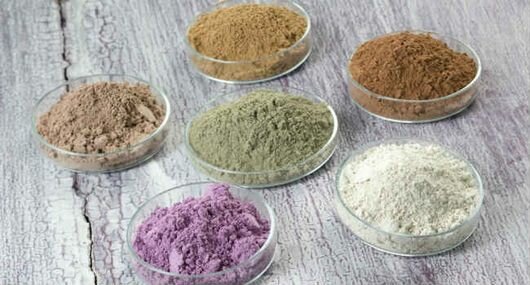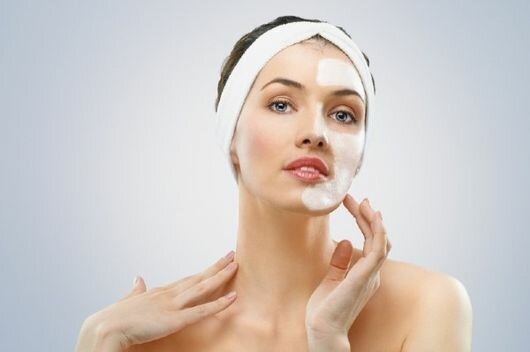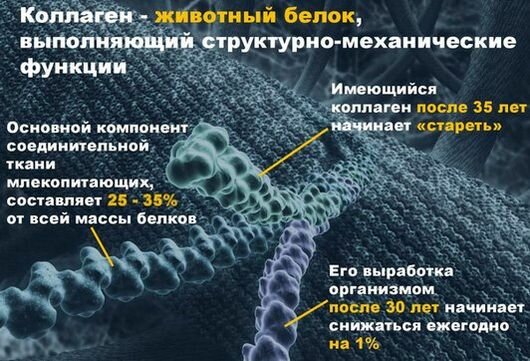Antibiotics in the fight against acne on the face are used in the form of tablets, ointments, masks. However, such a treatment should be prescribed by a doctor, as Acne is an inflammatory skin disease that can be caused by many causes, including an unbalanced diet, hormonal problems, an improper lifestyle, and stress.
In these cases, antibiotics will not help. They are effective only when acne is caused by an infection.
Benefits
- Due to the fact that antibiotics kill pathogenic bacteria, they effectively remove inflammation.


- Antibiotics are available in different forms, so you can choose a drug for both local and internal use.
- The action of antibiotics is cumulative, therefore, even after the end of the course of taking the drug, they continue to act.
- Antibiotics have a complex effect on the body, so they treat not only acne, but also other inflammatory processes in the body.
disadvantages
Antibiotics also have disadvantages, which is why they are not recommended for use for prevention:
- When antibiotics are used, the stomach and liver are seriously loaded inside, so sometimes tablets are replaced by injections.
- They weaken the body’s defenses.
- Drugs can cause severe allergies.
- A new wave of the disease is possible after the end of the course of treatment.
- Antibiotics will not help against comedones, where there are no signs of inflammation.


- If the disease is caused by hormonal problems or an unbalanced diet, the effect will be short-lived and insignificant.
Ways to use antibiotics
Antibiotics for acne can be used:
- externally – moreover, the face can be lubricated both completely and ointment is applied pointwise;
- orally – in this case, antibiotics have a complex effect on the body;
- subcutaneously , intravenously or intramuscularly – it is possible to avoid the negative effect of the drug on the organs of the gastrointestinal tract.



 Do not miss the most popular article in the rubric:
Do not miss the most popular article in the rubric: Face fitness for lifting the face contour, rejuvenation, muscle tone. Master class from Elena Karkukli
Antibiotic Ointments
An ointment with an antibiotic for acne is usually applied pointwise to the areas of rash on the face.
Thanks to the antiseptic effect, inflammation is quickly removed.
Baziron AC – helps eliminate acne if their appearance is caused by the penetration of staphylococcal infection. The active substance is benzoyl peroxide. Approximate cost – $ 6,8. 

Differin ointment – is made on the basis of adapalene, has a strong drying effect. According to the instructions for use, it must be applied pointwise. But, acquiring this remedy, you need to understand the difference between acne and acne.
Acne is filled with purulent contents, and acne is an inflammation inside the hair follicle – comedone. The drug will be effective specifically for acne. Approximate cost – $ 5,44.
Zinerite – the main active ingredients are erythromycin and zinc acetate. In addition, alcohol is present in the composition. Zinc acetate promotes the penetration of the antibiotic deeper into the skin, as well as faster healing of acne marks. Erythromycin prevents the growth of bacteria, which positively affects the severity of the inflammatory process – it slows down. 

The ointment must be applied in the morning and evening on cleansed skin. The course of use is 10 weeks, but a positive effect is observed by the end of 2 weeks. The product has a drying effect on acne, the skin is smoothed, abscesses disappear. The doctor especially recommends this ointment for the detection of streptococcal infection. Cost – $ 9,52.


Metrogil Gel helps against comedones and rosacea. The active substance of this drug is Metronidazole.
Benzamycin gel contains two active ingredients at once – erythromycin and benzoyl peroxide.
The drug blocks the growth of pathogenic bacteria, reduces the intensity of secretion by the sebaceous glands, helps cleanse the pores and stop the formation of comedones.
Ointment Curiosin – contains zinc hyaluronate. This is a gentle product that, in addition to the treatment of rashes, moisturizes and restores the skin, but it will be effective if there is a small amount of acne on the skin. Price – $ 4,08.
Skinoren gel is a product made on the basis of azelaic acid. It has a complex effect, treats acne, including seborrhea and pigmentation. Price – $ 9,52.
Antibiotic masks
Masks with antibiotics help get rid of acne. Many of them are made on the basis of synthomycin ointment, which fights inflammation and has an antiseptic property.
A cream with an antibiotic for acne homemade is prepared from synthomycin ointment. It is necessary to take a small amount of synthomycin ointment, sufficient for one use, squeeze 1 cap. vitamins A and E, mix and apply on face. 

Synthomycin is especially helpful against subcutaneous acne.
You can prepare a mask based on streptomycin ointment, Vishnevsky ointment and aloe gel. The components must be mixed in equal proportions and distributed over the face. After 10 minutes, the product is washed off with water and baby soap.
Antibiotics in tablets
With a large area of rashes, antibiotics can be prescribed for oral administration. However, this method of use has more contraindications, so it is not recommended to use them on your own, without consulting a doctor. 

One of the most commonly indicated antibiotics is doxycycline. It is active against staphylococci and streptococci aerobic bacteria, inhibits protein synthesis. It can be used in combination with antibiotics in the form of an ointment. Of the contraindications, pregnancy should be especially noted.
Doxycycline should be taken once a day after meals. The daily dosage is 50 mg. It is also produced under the name Unidox Solutab, Medomycin, Vibramycin. The drug refers to tetracycline drugs.
The advantage of these drugs is:
- high activity against bacteria that cause acne;
- high degree of absorption;
- accumulation of active substances in the sebaceous glands.
Tetracycline drugs are prescribed in a low dosage for a long course. This treatment tactic allows you to avoid most side effects and achieve excellent results.
Together with tetracycline drugs, you can not take:
- diabetes medications;
- psychotropic drugs;
- hormonal contraceptives;
- anticonvulsants;
- systemic retinoids.
Doxycycline is prescribed in a course of 8 weeks. After completing the course, it is recommended to take doxycycline 20 mg per day to maintain the effect.
For acne, antibiotics of the macrolide class are also taken, which include Erythromycin and Vilprafen.
Erythromycin is taken in a daily dosage of up to 1000 mg, dividing the daily dose into 3-4 doses. This is the only systemic antibiotic 
 that is approved for use by pregnant women.
that is approved for use by pregnant women.
In addition to oral administration, which often leads to addiction, Erythromycin is prescribed in the form of a one percent ointment, along with preparations based on Clindamycin, Erythromycin is also prescribed as part of Zinerit, Benzamycin, Isotrexin.
Despite the fact that erythromycin is allowed to be used during pregnancy, it is not as harmless as it might seem. Among the side effects: disruption of the liver, dysbiosis and diarrhea, as a result of it – nausea and vomiting.
Contraindications include:
- individual intolerance;
- hepatic pathology;
- lactation period.
Vilprafen Solutab is prescribed in tablets with a dosage of 500 or 1000 mg. The active substance is josamycin. The drug is not suitable for the treatment of children under 14 years of age.
At the beginning of the course – the first 4 weeks – the drug is taken at the maximum dosage, breaking the daily dose into 2 doses. The second half of the course is reduced by half and drinks 1 tablet. 1-2 times a day. The duration of the course is 8 weeks. 

Vilprafen reduces the effectiveness of contraceptives of the hormonal form, can lead to nausea, vomiting and impaired liver function.
For acne, antibiotics belonging to the class of lincosamides can be prescribed, with special sensitivity of pathogenic bacteria to them. Popular drugs include lincomycin and clindamycin.
Clindamycin is taken in a dosage of 150 mg every 6 hours for 10 days. Since this drug is very irritating to the mucous membrane, you need to take it either with food, or drink it with a glass of water. 

During the administration of clindamycin, it is strictly necessary to refrain from the use of medicines containing magnesium sulfate, calcium gluconate, erythromycin and B vitamins.
Lincomycin is also used in the treatment of acne. The daily dosage is 1.5-2 mg. Unlike Clindamycin, the drug is recommended to be taken not on a full stomach, but on an empty one. Moreover, after taking Linkomycin, as before it, you do not need to eat 2 hours. 

Some antibiotic pills can be used externally. Such antibiotics include, for example, Erythromycin, Clindamycin, Doxycycline, Ampicillin.
To prepare the mass for processing, it is necessary to grind the tablet, and then mix it with a small amount of boiled water to make a pulp mass. The diluted powder is applied pointwise to acne $ 0,03. in a day. The course of treatment is 2 weeks.
You can make acne scrub from pills. To do this, take 1 tab. any of these antibiotics, and one tablet of aspirin and Suprastin. All is ground to powder, a little water is added to make the mixture pasty and applied to the skin.
Admission Rules
An acne antibiotic is used, observing several important rules:
1. Therapy with the use of antibiotics should be prescribed by the doctor when diagnosing the 3rd or 4th degree of acne:
- the third degree of acne is characterized by the development of a rash, including large acne at different stages of development, including suppuration. At this stage, after getting rid of blackheads, a scar and a stain remain;


- the fourth degree of acne is characterized by the development of large blackheads, crimson, casting blue. Moreover, several blackheads are interconnected by dependent channels and form a cyst. In the absence of treatment at this stage of the disease, blood poisoning, the appearance of gross scars are possible.
2. For moderate acne, antibiotics such as tetracycline, erythromycin, clindamycin will be effective. In some cases, local preparations containing an analogue of vitamin A are prescribed. The severe form requires complex treatment, including antibiotic therapy, the use of retinoids and physiotherapeutic methods.
3. The duration of therapy should clearly comply with the instructions of each drug. It is different: for one it is 7-10 days, for another – up to 18 weeks. The treatment regimen must be strictly observed without increasing the duration of treatment.
Taking antibiotics should be combined with other methods of therapy.
How to increase efficiency
The best results are obtained by a combination of antibiotic therapy with benzoyl peroxide and adapalene, as well as hormone therapy. So that bacteria are not accustomed to a specific antibiotic, it is recommended to take benzoyl peroxide separately in between courses.
Before prescribing an antibiotic, a competent approach involves conducting a bacteriological study aimed at identifying the causative agent of the disease. This is done in order to select an antibiotic to which the bacteria will be sensitive.



 Do not miss the most popular article in the rubric:
Do not miss the most popular article in the rubric: Facial massage according to the Japanese doctor Asahi Zogan.
Why antibiotics do not always help
Antibiotics in pills for acne on the face with self-administration can give absolutely no result if incorrectly selected. Each of the antibiotics affects certain bacteria, for this purpose, before prescribing antibiotics, tests are performed to identify which pathological microorganisms have caused inflammation.
Bacteria can develop antibiotic resistance. To avoid this, it is always necessary to complete the course of antibiotic treatment to the end.
Acne after antibiotics
Antibiotics sometimes not only do not help against acne, they, on the contrary, appear after treatment. This complication after antibiotic therapy is caused by the negative effec
t of antibiotics on the digestive tract. The essence of the phenomenon is to activate the sebaceous glands.
Acne after antibiotics occurs as a reaction to a separate component in the composition of the drug, and to a specific antibiotic, which is caused by an individual reaction or a hereditary predisposition. Acne can also be a kind of allergic reaction to an antibiotic when its amount in the body reaches a certain concentration.
To avoid acne when taking antibiotics, you must:
- Avoid contact between hands and face. During the period of taking antibiotics, immunity, including skin, is weakened, therefore, with a special predisposition, inflammation can occur. If acne is already present, then you can not get rid of them mechanically, i.e. squeeze out;


- in any place to have personal care products and use only them;
- lead a healthy life, play sports, maintain the body in good shape. This helps to remove harmful substances from the body.
- observe a hygiene regime, thoroughly cleanse the skin of the face with special means;
- change bedding as often as possible;
- use drying agents and clean pores in a timely manner.
It is important to know that getting rid of acne caused by taking antibiotics helps antibiotics, but in the form of ointments.
Acne antibiotics on Malyshev’s face
With severe acne, Elena Malysheva advises using complex antibiotic therapy, i.e. use antibiotics topically and take them inside (in different forms).
Secondly, Malysheva advises to use products for oily, mixed and problem skin in facial skin care, and after washing with such products, apply preparations from the retinoid group to the skin. Retinoids, for example, are contained in Differin, which helps to reduce the stratum corneum and somewhat relieves inflammation. 

But in order to permanently kill microbes (because they are not only on the surface, but also penetrate inside), it is necessary to use antibiotics that are taken orally, for example, Doxycycline or Unidox Solutab. The course of therapy should be up to 3 months.
Contraindications
Among the contraindications for taking antibiotics for acne are:
- period of pregnancy and lactation;
- renal and liver failure;
- individual intolerance or special sensitivity to the components of the drug;
- children under 12 years old;
- impaired hemoglobin metabolism or porphyria.
If the disease is caused by an infection, then antibiotics for acne on the face will definitely help. They are used as part of tablets, ointments, creams, masks. But due to the fact that when taken orally, antibiotics have a systemic effect on the body, and also have many side effects, you can’t take them “just in case”. Treatment should be prescribed by a doctor.
Acne antibiotic videos
Recommendations Malysheva to eliminate acne on the face:
Effective Acne Treatments:







